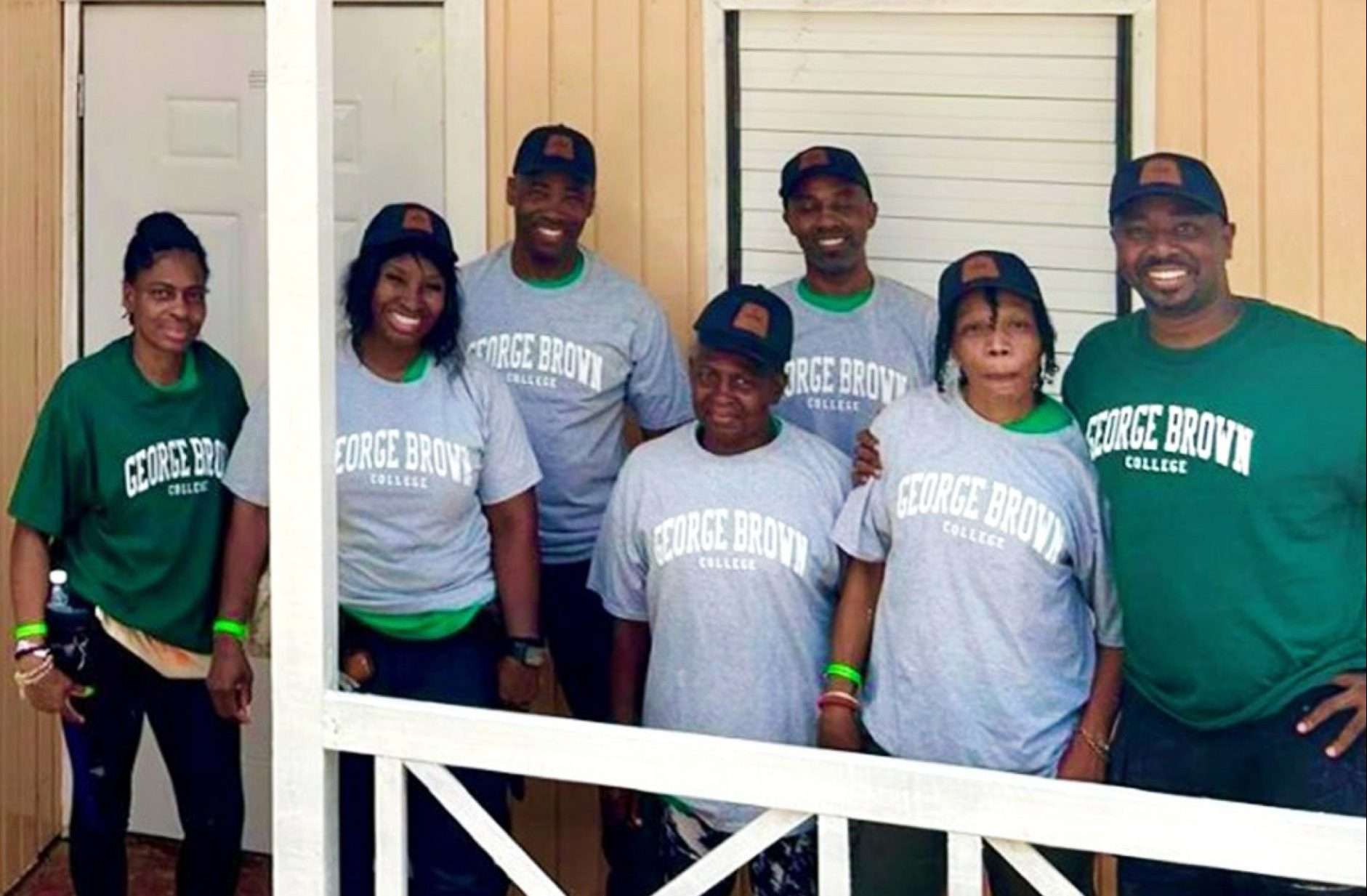BY PAUL JUNOR
The announcement that two alumni of George Brown College have made a big difference by building a home for a needy family in Jamaica is good news. The names of the alumni are Chris Campbell (who graduated from the Carpentry General Apprenticeship program and currently serves as President of the Toronto Carpenters’ Union Local 27 and Equity, Diversity, and Inclusion Representative, Carpenters’ District Council of Ontario), and Rokhaya ‘Rok’ Gueye who graduated from the Construction Engineering Technician program. They were responsible for obtaining their own funds to offset their personal expenses and through fundraising initiatives they accumulated an additional $20,000 which helped to defray the costs of building the home.
This humanitarian mission to build a home for Beulah and her family took place in the parish of St. James on the north coast of Jamaica. Chris (as a representative of the Toronto Carpenters’ Union Local 27) teamed up with a well-known local charity in Jamaica, Food for the Poor, to provide not just construction materials (as framing walls and installing roofs), but intangible things as well. This humanitarian initiative represents the true essence of breaking the cycle of generational poverty and demonstrates the power of skilled professionals giving back to communities in need.
Chris Campbell is the first African-Canadian President in the history of the 127-year-old Carpenters’ Union Local 27. He is also a member of the George Brown College Board of Directors. With respect to his first-hand experiences working with the team of volunteers Chris expressed positive feedback., “We came back feeling inspired with a renewed appreciation of the difference we can all make for those who are less fortunate.”
Gueye expressed positive reflections of her time in Jamaica working on the construction project. She notes, “It was a deeply fulfilling experience to participate in a humanitarian project in Jamaica. As a woman, providing a safe home to a less fortunate family means offering them a place to live that is secure, stable, and conducive to their well-being. Together, we transformed Beulah’s life and laid the foundation for a lasting legacy for her family and future generations.”
There were three aspects of the work of the humanitarian mission. They include:
They built hope for a family in need.
- A collective effort of compassion
The project was a testament to community spirit.
Their work does more than provide shelter, it breaks the cycle of generational poverty and demonstrates the power of skilled professionals giving back to communities in need. This humanitarian initiative represents the true essence of professional development-using skills to make a meaningful impact that extends far beyond professional boundaries

